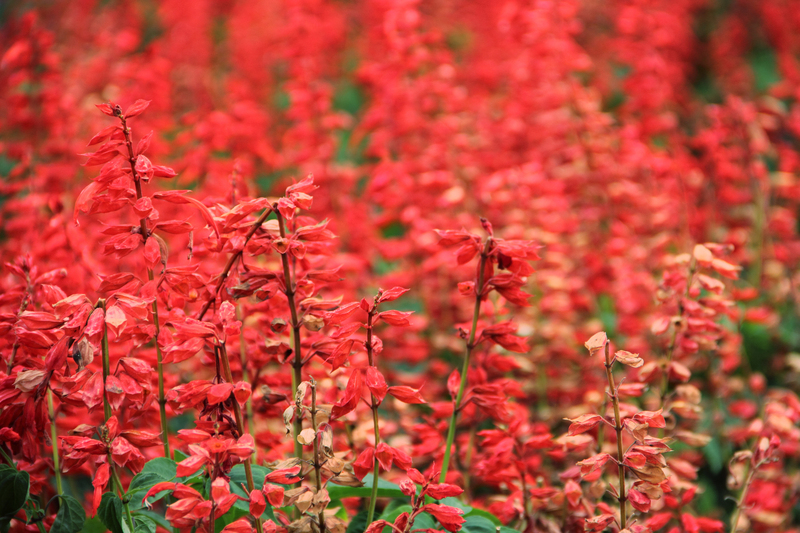Flourish Your Orchids with Proven Care Techniques
Posted on 19/05/2025
Flourish Your Orchids with Proven Care Techniques
Orchids are among the most beloved and fascinating houseplants, celebrated for their elegant blooms and exotic allure. Yet, many orchid enthusiasts struggle to keep their plants thriving year-round. If you desire healthy, abundant blossoms, this in-depth guide on orchid care techniques will unlock the secrets to flourishing orchids. Let us delve into everything you need to nurture your orchids--regardless of your level of experience--so that they bloom beautifully and enrich your living spaces.
Understanding the Unique Needs of Orchids
Orchids are unique among houseplants because of their specific requirements. Unlike common potted plants, many orchids are epiphytes--meaning they naturally grow on other plants, not in soil. This origin shapes nearly every aspect of their care. To help your orchids truly flourish, it's important to replicate their natural environment as closely as possible.
The Different Types of Orchids
- Phalaenopsis (Moth Orchids): The most popular and beginner-friendly, Phalaenopsis are known for their long-lasting, butterfly-like flowers and simple care requirements.
- Cattleya: Often called the "Queen of Orchids," Cattleyas have showy blooms and thrive with more light than Phalaenopsis.
- Dendrobium: Renowned for prolific clusters of blossoms, these need cooler nights to stimulate flowering.
- Vanda: Admired for their striking patterns and colors, Vandas require high humidity and excellent air circulation.
Each variety demands subtle differences in care, but all orchids benefit from a few universal principles. Let's explore these proven orchid care techniques.

The Right Orchid Environment: Light, Humidity, and Temperature
Optimal Light Conditions for Thriving Orchids
Light is critical to orchid health. Most orchids desire bright, indirect sunlight. Direct sun can scorch leaves, while insufficient light leads to few, if any, flowers. Use these tips:
- Place orchids near east-facing windows for gentle morning sun.
- If using south or west windows, use sheer curtains to diffuse strong light.
- Dark green leaves usually indicate inadequate light, while yellowish tones may mean too much sun.
Light meters or grow lights may benefit those without sufficient natural light. Aim for 12-14 hours of light daily, especially in winter months.
Maintaining Ideal Humidity for Flourishing Orchids
Humidity is often the missing ingredient for healthy orchids. These tropical beauties prefer 50-70% humidity. Here's how to increase humidity for thriving blooms:
- Set orchid pots atop humidity trays filled with pebbles and water (but never let the pots sit in water!).
- Mist orchids frequently using distilled water--the finer the spray, the better.
- Place a humidifier nearby to stabilize humidity levels during dry seasons.
Temperature: A Key Factor in Orchid Blooming
Most orchids flourish with daytime temperatures of 65-80?F (18-27?C) and nighttime temperatures of 55-65?F (13-18?C). Slightly cooler nights often help trigger blooming in many species. Remember:
- Avoid temperature extremes or drafts near windows and air conditioners.
- Monitor temperature fluctuations to ensure consistent conditions.
Proper Watering: The Foundation of Flourishing Orchids
Overwatering is the main enemy of orchid health. Since their roots need both moisture and air, they are prone to root rot if waterlogged. For effective orchid watering:
- Water orchids only when the growing medium feels dry about an inch down. Use your finger or a wooden skewer to check.
- Drench the pot thoroughly, then let all water drain away to prevent stagnant moisture at the base.
- Reduce watering frequency in winter or in lower light.
- Rainwater or distilled water is ideal, as tap water can contain harmful salts and chemicals.
Signs of improper watering:
- Dull, shriveled leaves: Underwatering
- Yellow, mushy roots or black spots: Overwatering
With these techniques, your orchids will grow strong and resilient, rewarding you with robust, frequent blooms.
Repotting and Orchid Growing Media
When and How to Repot Orchids
Repotting is essential for orchid health. Most should be repotted every 1-2 years or when the growing medium breaks down. Common signs it's time to repot:
- Roots growing out of the pot
- Moss or bark breaking down or retaining excess moisture
- Plant appears crowded or unstable
Selecting the Right Orchid Potting Mix
Opt for specialized orchid potting mixes containing ingredients like:
- Bark (fir, pine, or redwood)
- Sphagnum moss
- Perlite or charcoal
- Leca pebbles or coconut husk chips
These mixes provide the essential aeration and drainage necessary for orchids to thrive.
Step-by-Step Repotting Process
- Gently remove the orchid from its pot, and shake away old medium.
- Trim dead or rotting roots with sterilized scissors.
- Place the orchid in the new pot, spreading roots over fresh growing medium.
- Fill in gently around the roots, keeping the base level with the rim of the pot.
- Water lightly and place in indirect light.
Proper repotting rejuvenates your orchid and sets the stage for vigorous growth and flowering.
Nourishing Your Orchid: Feeding and Fertilizing
While orchids do not need heavy feeding, they benefit greatly from regular, balanced fertilizing.
- Use orchid-specific fertilizer, or a balanced formula (20-20-20) diluted to quarter strength.
- Feed every 2-4 weeks during active growth (spring and summer).
- Flush the pot with clear water monthly to remove fertilizer salts.
- Reduce feeding in autumn and winter when plant growth slows.
With consistent, light feeding, your orchids will flourish, showing off healthy leaves and bountiful blooms.
Pest Management and Disease Prevention
Nothing is more disheartening than seeing your healthy orchid suddenly infested with pests or struggling with diseases. Fortunately, early intervention and routine checks keep most problems at bay.
Common Orchid Pests
- Mealybugs: White, cottony masses on leaves or roots.
- Scale insect: Hard, shell-like coverings on stems and undersides of leaves.
- Spider mites: Fine webbing between leaves and yellow stippling.
- Aphids: Small green, black, or brown insects feeding on new growth.
Effective pest management includes:
- Wipe leaves with soapy water or rubbing alcohol.
- Isolate infested plants to prevent spread.
- Use horticultural oils or insecticidal soap for persistent infestations.
Preventing Orchid Diseases
- Good air circulation prevents fungal and bacterial infections.
- Clean up dead or infected leaves promptly.
- Never let water sit in the leaf axils--this can promote rot.
- Disinfect all tools before and after use.
Prompt attention and ongoing care will keep your orchids healthy and disease-free.
Encouraging Your Orchids to Re-Bloom
With good care, most orchids will re-bloom year after year. If your plant isn't sending up flower spikes, consider these techniques:
- Check light and temperature: Too little light or warmth will inhibit blooming.
- Allow for a drop in nighttime temperature by 10-15?F (5-8?C) for a few weeks in the fall.
- Feed moderately but stop fertilizing while buds are developing to avoid bud drop.
- Be patient, as some orchids take months to form new spikes after flowering!
Phalaenopsis orchids often re-bloom on old stems. After blooms fade, cut the stem back to a visible node to encourage new flower spikes.
Propagating Orchids: Growing Your Collection
Expanding your orchid collection or sharing with friends is possible through orchid propagation. Popular methods include:
Division
- Best for sympodial orchids (like Cattleya or Dendrobium).
- When repotting, gently separate the rhizomes, ensuring each section has several healthy pseudobulbs and roots.
Keiki Production
- Phalaenopsis orchids often form "keikis"--baby plants on flower spikes.
- Let the keiki develop roots at least 2-3 inches long before removing and potting separately.

Expert Tips for Flourishing Orchids
- Observe your plants regularly. Detect problems early by checking leaves, roots, and flowers weekly.
- Be gentle when handling orchids, as their roots and leaves are delicate.
- Keep a plant journal to track watering, feeding, and repotting schedules.
- Never use standard houseplant soil, as it retains too much moisture and suffocates roots.
- Rotate plants regularly for even exposure to light.
Debunking Common Orchid Myths
Orchids aren't hard to grow--they simply have special needs! With a little knowledge and consistency, anyone can make orchids thrive in the home.
- Myth: Orchids need constant misting. Fact: Consistent humidity is more important than frequent misting, which can cause disease if overdone.
- Myth: All orchids grow in soil. Fact: Most popular orchids need bark or moss-based media for their roots to breathe.
Conclusion: Enjoy the Rewards of Strong, Blooming Orchids
By following these proven orchid care techniques, you will transform your orchids from average houseplants into spectacular blooming treasures. Understanding their unique requirements--light, humidity, watering, feeding, and proper media--lays the foundation for a lifetime of flourishing orchids and endless enjoyment.
Remember: Observe, adjust, and care with patience. Your reward will be a vibrant display of lasting blooms, lush foliage, and a closer connection to the wondrous world of orchids. For more expert guidance on orchid plant care, join orchid societies, read trusted resources, and--above all--enjoy every moment with your beautiful plants!

